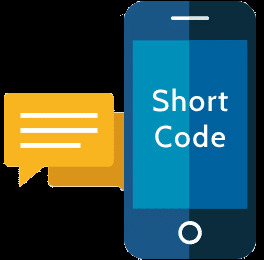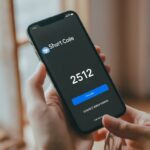If you have received a 778273 text message, you should treat it as a legitimate, high-priority security alert. This six-digit number is a shared short code used by major technology, finance, and social media platforms for one essential purpose: Two-Factor Authentication (2FA).
The 778273 short code is NOT typically used for marketing or bulk promotions. It is used to send transactional, on-demand verification codes necessary to confirm your identity when accessing or making changes to your online accounts.
This guide identifies the common senders, explains why you received the code, and provides the crucial steps to take, especially if you did not request the message.

-
Who Uses the 778273 Short Code?
The 778273 short code is a secure, leased number shared by multiple large entities. The message content itself usually specifies the source, but the most common senders include:
| Sender Category | Common Examples | Purpose of the Text |
| Tech Giants | Google (Gmail, YouTube, Google Voice), Microsoft (Outlook, Xbox, Office 365) | Login verification, password resets, and high-security alerts. |
| Social Media/Web | Instagram, Facebook (Meta), Twitch, Indeed | Two-factor authentication (2FA) when logging in from a new device. |
| Financial/E-Commerce | Square, Wealthsimple | Verifying identity for making a payment, accessing merchant dashboards, or linking bank accounts. |
The Purpose: The message contains a time-sensitive, one-time passcode (OTP) required to complete a login or a password reset attempt.
-
CRITICAL: What to Do If You Didn’t Request the Code
If you received a 778273 text message but were not actively trying to log in or reset your password, this is a serious warning sign.
It means that someone else has your password for that service and is attempting to bypass your 2FA security layer.
Action Steps (Do These IMMEDIATELY):
- Do NOT Enter the Code: Do not share the code with anyone who calls, texts, or emails you. The only person who should ever enter that code is the person currently logging in (which should be you).
- Change Your Password: Immediately log in to the account mentioned in the text (e.g., Google, Microsoft, Square) on a secure device (like your home PC) and change your password to something complex and unique.
- Check Account Activity: Review the account’s security or activity log for signs of unauthorized logins or recent changes.
- Upgrade 2FA: If possible, upgrade your 2FA method from text message codes (SMS-based 2FA) to a more secure authenticator app (like Google Authenticator or Authy). Authenticator apps are immune to SIM-swap attacks and other common phone-based scams.
- How to Stop Messages from 778273
Since the 778273 short code is used for necessary security and transactional alerts, you cannot simply reply STOP or block the number without consequences.
Why You Should NOT Block 778273
Blocking the number will prevent the code from reaching your phone. If you ever lose your password or buy a new phone, you will be unable to receive the verification code and will be locked out of your own account.
How to Manage or Stop the Texts
- Ignore Unsolicited Codes: If you were not trying to log in, simply delete the message. The code is time-sensitive (usually 5-10 minutes) and will expire harmlessly.
- Change Authentication Method: The only way to permanently stop all texts from 778273 is to manually go into the security settings of all your online accounts (Google, Facebook, Microsoft, etc.) and switch your two-factor authentication method from SMS to an Authenticator App.
- Address Wrong Number Issues: If you consistently receive verification codes for a service you do not use, it means someone else mistyped their phone number when setting up their account. You can safely ignore and delete these messages; the sender will eventually realize they used the wrong number.
Frequently Asked Questions (FAQ)
Why does the text say “Square” but I don’t use Square?
The short code is shared. The service that is triggering the code (e.g., Square or Wealthsimple) sends its message through the shared network. If you receive a code for a service you don’t use, it usually means someone else is trying to set up that service but mistakenly entered your phone number.
Is it safe to click a link in a message from 778273?
You should never click any links in an unexpected text message. While the text containing the code is legitimate, if the message includes an unnecessary link or asks you to “verify” something before logging in, it could be a phishing attempt designed to steal your credentials before you use the real code. Always go directly to the service’s official website or app to log in.
Why does 778273 sometimes appear as “SPRAUTH”?
This is related to the code’s original registration. Short codes can sometimes be associated with a simple, memorable alphanumeric sequence. “SPRAUTH” likely stands for “Sprint Authentication,” reflecting the carrier that originally registered the code for their network. However, its current use is now widely shared by many non-Sprint/T-Mobile tech companies.


